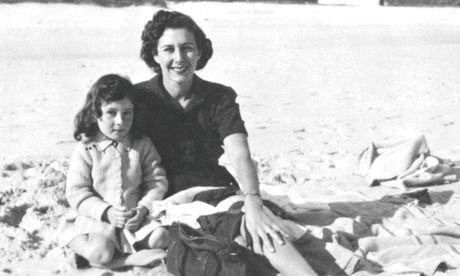
Raised to be her mother's listener, her mother's carer, her mother's sister and her mother's biographer from early childhood, Lyndall Gordon's intellectual trajectory was set. She was to spend her working time chronicling the lives of others.
A biographer with soul, she reaches into the hearts of those she brings alive for us. She makes the meaning of their lives sing and sweat as she invites us into their experiences, their longings, their struggles and their disappointments. In preparation she has learnt the anguish and the heartbeat of another, the other, her mother, Rhoda, whose presence rules the pages of this memoir.
Lyndall absorbs Rhoda's fears and behaviours long before she can understand them. She learns to push the bristles from a hairbrush into her mother's wrists as she writhes about before she is told what is wrong. Later she learns the word "seizure". She doesn't know whether that is a psychological consequence of what is going on in mother's mind – a hysteria – or whether it is a physical explosion in her brain. No one quite seems to know.
As with Lauren Slater's extraordinary account of epilepsy in Spasm (is it or isn't it?), we the readers wonder at the "illness". Sometimes we rage at the manner in which her mother blankets Lyndall's childhood and her attempts to grow up and out of the mother-daughter bond. It's easy for us to feel but not so easy for her. Inevitably in such an intimate relationship, Lyndall feels safe when she is with her mother, and we sense that she makes her mother safe by being the caring, untroublesome child. Her mother's perspective trumps her own, and she searches for how and why her mother is as she is. She comes to understand that her mother's real life, the-before-the-illness life, ended when Rhoda was 17 and suffered a bereavement. The tragic, the anti-heroic, the passionate resonance of loss become sites of meaning and authenticity for Lyndall too.
Rhoda's passion is reading, writing, dreaming. Reverie marks their relationship. And yet for all the passionate connection between the little girl made into a sister to her mother, the girl longs to be a little girl, to recount Little Miss Muffet and carry a schoolbag like the other children rather than recite poetry and wear a posturally perfect satchel. Conformity is compelling but not easy for her to do. Untutored in the ordinary rules of right and wrong, humiliation and shame drench the young Lyndall. Her senses are too developed. She has already learned to watch lives – "its sufferings and resilience", which becomes "the fountaining" of her writer's voice.
By the time schooldays end, Lyndall tells her husband-to-be, Siamon, that she's "looking forward to a sad love affair. Nothing in my experience can match up to the romantic drama of… mother's youth." Tragedy and loss are her tropes. In time, severe postnatal depression and disorientation, and the administration of electric shock therapy – which is, in essence, induced fits – make Lyndall's life look like the confirmation of her mother's life. She's deeply literary, deeply feeling and deeply troubled. She gives her mother's life meaning by reproducing it in herself. Until… until she dares to live a different solution made possible by the historical moment of second-wave feminism that puts to an end the understanding of a daughter as only reproducer of a mother's life.
In this turn she has the help of a husband who, enamoured of his own work, knows that Lyndall needs her own. He suggests for her the work of biography for which she is so well made. During her second pregnancy she is helped by the understanding that for some women pregnancy and/or the postpartum period can produce hormonal imbalances which mimic severe depression. Her life starts again as she goes to Oxford and learns the art of telling a life and of learning the pleasures of inquiry and exchange. She would go on to chronicle the lives of literary greats including Charlotte Brontë, Henry James, TS Eliot and Virginia Woolf.
As Lyndall comes of age, her mother awakens to a Zionist politics that will hold little for the daughter, and the claustrophobic involvement between them begins to fracture. Meanings have to be remade and the relationship between mother and daughter continually negotiated.
In this fascinating mix between memoir and biography we see the struggle of a daughter, to keep an attachment with her mother that is both close and yet boundaried, separate and connected, an attachment in which each can live their dreams. Lyndall gives that to her daughters. The cloying nature of the bond she has experienced and her struggle to articulate a life outside the home means that she works hard to offer her girls the chance to cleave towards and away from her. This is the struggle of daughters and mothers today. To be able to both stand looking at the world without the loss of their intimacy and without the burden of the daughter carrying the mother's unmet desires. What Lyndall is able to do for her daughters has depended on what she has been able to make happen in her own life. She demonstrates in her living the possibilities for them so that they can make their own dreams.
Susie Orbach, psychoanalyst, is the author of several books on the mother-daughter relationship.

